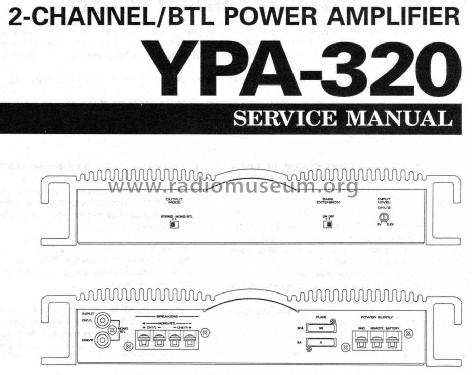Lisp Winston Horn Pdf
Book reviews601T. Hopkins and C. Phillips, Numerical Methods in Practice Computer Science Series, Addison-Wesley o-201-19248-9 (Paper).Group of six British Universities) to fill part of the documentationmost commonlymethods,used numericalThe advantagesand disadvantagesLibrary, InternationalPublishing Co., Reading Mass., 1988. 308 pp., US $26.95. ISBNThe NAG (Numerical Analysis routines. This book is designed included.Using the NAGemphasizingLibrary now contains, at Mark gap of that Library. Describedthose of the NAGof the methodsLibrary,12, 688 are thebut other methodsareare discussed.Contents: 1.
Introduction 2. Roots of functions 3. Quadrature 4. Linear equations 5.
Curve fitting 6. Ordinary differential Appendices: Solutionsequations to exercises;NAGGraphicsToolpack;Bibliography;NAGRoutineIndex;Index. Bombieri and D. Coldfeld, Number Tlieory, Trace Formulas and Discrete Groups, Academic Press, San Diego, California, 1989. 510 pp., US 869.95.
ISBN o-12-067570-6. This collection, honoring Atle Selberg, contains 8 lectures summarizing Selberg’s work and 21 research announcements. The papers range over those many topics of interest to Selberg. Included are sieve methods, analytic number theory, the Trace formula, harmonic analysis and discrete groups.
Sedgewick, Algorithms (2nd Edition), Addison-Wesley s9.75. ISBN O-201-06673-4.Publishing Co., Reading, Mass., 1988. 657 pp, USThis second edition continues the orientation toward algorithms that are of practical use. The book contains forty-five chapters grouped into eight major parts; fundamentals, sorting, searching, string processing, geometric algorithms, graph algorithms, mathematical algorithms and advanced topics (parallel, fast Fourier transforms, NP complete problems etc).
The three major changes of the second edition are: A new section covering introductory material on data structures and the design and analysis of algorithms. Second, the analysis of algorithms is developed more fully and more rigorously than previously. And, third, hundreds of figures have been added to amplify the text. The work will be useful as a textbook for an advanced course and for reference use. Winston and B.K.P. Horn, LISP (Third Edition), Addison Wesley, Reading, Mass., 1989. 608 pp, Paperback, US 834.50.
ISBN 0-201-08319-l. This third edition retains the broad coverage of previous editions in Artificial Intelligence fields. Topics range from the basics of symbolic manipulation and LISP programming examples of LISP in practice. Some of the topics covered include symbolic manipulation,and related to detailed basic LISPBook reviews602primitives, properties symbolicpredicates and conditionals, data abstraction and mapping, iteration on numbers and lists, and arrays, macros and backquote, List storage, List reclamation, constraint propagation, patternmatching,transitiontrees, findingpatternsin images, etc. Baase, Computer Algorithms - Zntroduction to Design and Analysis Reading, Mass., 1988. 415 pp., US $40.95.
ISBN O-201-06035-3. The threefold and techniquesgoal of this text is to teach algorithms of computationalbounds on problem complexity), is suitable for an upper divisioncomplexityreal problems,(worst case and averageand to introduce course.Contents: 1.
Analyzing algorithms and problems: 2. Selection and adversary arguments 4. Graphs and digraphs 5. String matching 6.
Dynamic programming 7. Polynomials and matrices 8.
Transitive closure, Boolean matrices, 9. NP-complete problems 10. Parallel algorithms.for solvingprinciples(Second Edition), Addison Wesley,to teach basic principlesbehaviour,the areas of NP completenessspace usage and lowerand parallelalgorithms.Itand examplesand equivalencerelations(WFA) H. An nahw al wadih pdf printer. Chiyokura, Solid Modelling!$39.75. ISBN o-201-19245-4.with DESZGNBASE,Addison Wesley, Reading, Mass., 1988.
300 pp., USBoth theory and implementation techniques of solid modelling using DESIGNBASE are Integrated into the book are modelling systems for polyhedra and free-form surfaces. Some of covered include solid modelling in CAD/CAM, interactive modelling system, representation implementation of high-level operations, free-form curves, modelling methods of free-form generation of free-form surfaces, display of solid models etc. Design engineers will find this useful in their operations.discussed.
The topics of solids, surfaces, book very (WFA)E. Kratzel, Lattice Points (Mathematics and Zts Applications, East European Series), Kluwer Academic Publishers, Dordrecht, 1988.320 pp, Dfl. 198, US $99.50, UK &58. ISBN 90-277-2733-3. The estimation of the number of lattice points in large closed domains of ordinary Euclidean spaces is the subject of this book. Closely related to the problem of estimating exponential sums some interesting applications of that theory to the circle and sphere problems, to Dirichlet’s divisor problem are also studied.
Lisp Winston Horn Pdf Format
The distribution of “powerful” numbers and finite Abelian groups are also investigated. The author’s goal is to acquaint the reader with the fundamental methods, results and literature so that he may read the research papers in this area.
Lisp (Third Edition)-From the Back Cover Lisp (Third Edition) Patrick Henry WinstonBerthold K. Horn This third edition is a revised and expandedversion of Winston and Horn's best-selling introduction to the Lisp programminglanguage and to Lisp-based applications, many of which are possible asa result of advances in Artificial Intelligence technology.The Knowledge You NeedThe new edition retains the broad coverage of previouseditions that has made this book popular both with beginners and with moreadvanced readers-coverage ranging from the basics of the language todetailed examples showing Lisp in practice.
Lisp Winston Horn Pdf Download

Lisp Winston Horn Pdf Search
Based on the CommonLisp standard,this book also introduces CommonLisp's object system, CLOS, and the productivity-promotingtechniques enabled by object-oriented programming.Application examples drawn from expert systems, naturallanguage interfaces, and symbolic mathematics are featured, and new applicationsdealing with probability bounds, project simulation, and visual objectrecognition are introduced.
Comments are closed.